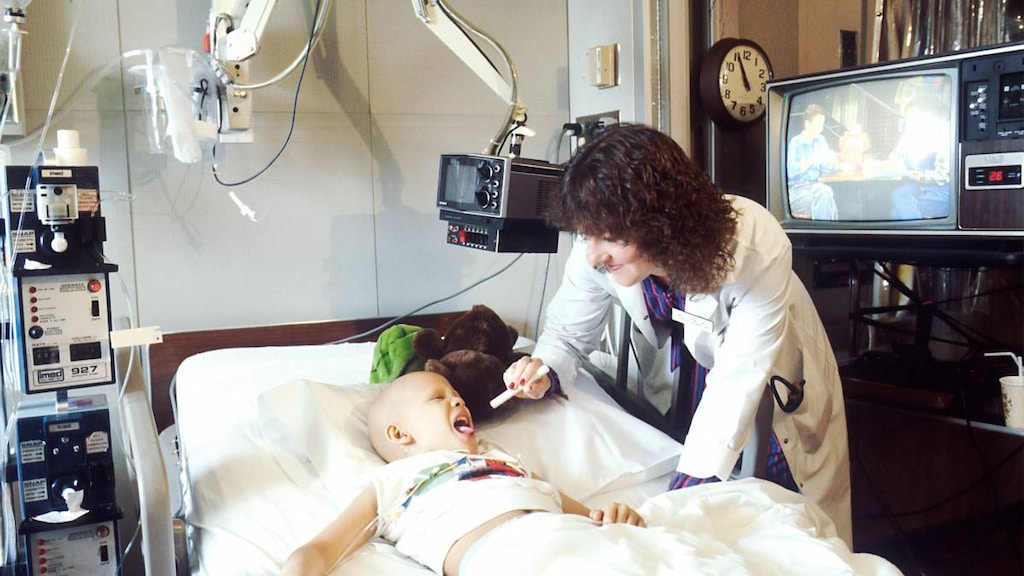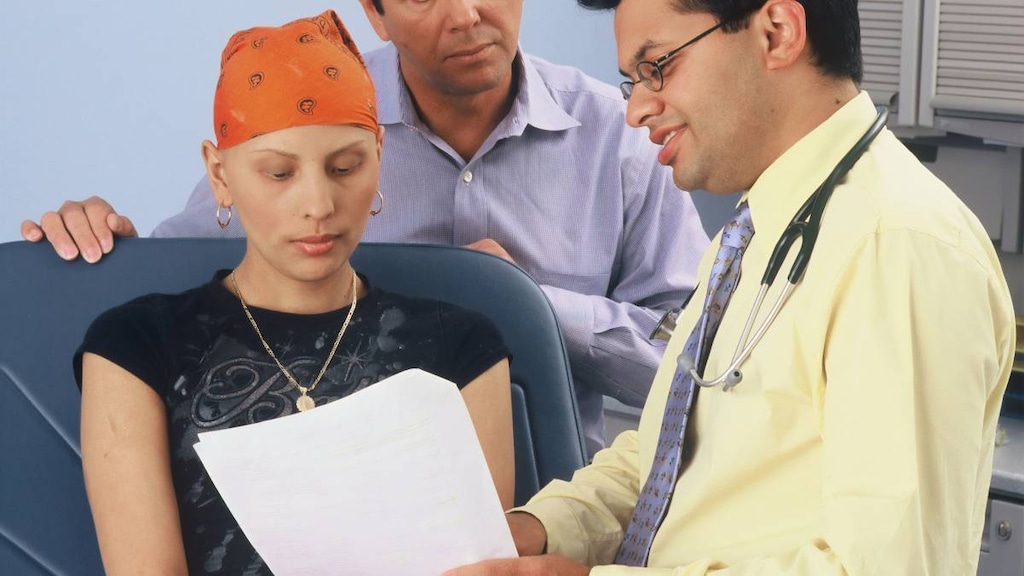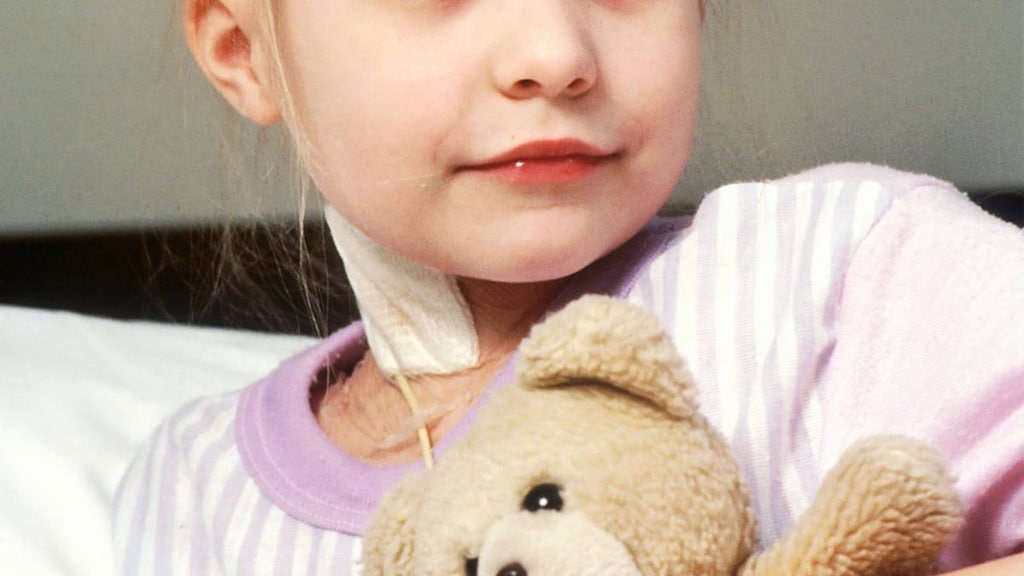Factors That Affect Leukemia Survival Rates

Leukemia is a type of cancer that interferes with the body’s ability to produce normal blood cells. While it affects far more adults than children, it is the most common childhood cancer.
Significant strides have been made in the treatment of leukemia in recent years, according to the Cleveland Clinic. The National Cancer Institute reports that, from 2009 to 2015, the overall five-year survival rate for leukemia was 63 percent. Still, the institute notes that, in 2019, there were 61,780 new cases and 22,840 deaths attributed to leukemia in the United States.
However, the survival rate varies markedly, depending on the age of the person with leukemia and the type of leukemia. According to American Cancer Society (ACS) statistics for 2019, the five-year survival rates break down like this:
Adults (ages 20 and up):
- Acute myeloid leukemia (AML) – 24 percent
- Acute lymphocytic leukemia (ALL) – 35 percent
- Chronic myeloid leukemia (CML) – 67 percent
- Chronic lymphocytic leukemia (CLL) – 84 percent
Children (ages 0-19):
- Acute myeloid leukemia (AML) – 67 percent
- Acute lymphocytic leukemia (ALL) – 89 percent
(CML and CLL are rare in children.)
What affects leukemia survival rates
Leukemia statistics provide a general sense about survival chances, but the reality is that it’s more complicated than that. According to the Cleveland Clinic, numerous individual factors affect a person's odds of recovery, including:
- Chromosome mutations or irregularities: The genetic changes that take place within leukemia cells are the most important factor in predicting a person's chances of surviving leukemia.
- Age: As a general rule, people diagnosed at a younger age have higher chances of survival.
- Overall health: The better a person's general health, the better the chance of recovery from leukemia.
- Blood cell and leukemia type: The number of red blood cells, white blood cells and platelets at the time of leukemia diagnosis is one predictor of survivability.
- Response to treatment: Factors including whether the cancer responded to treatment, was treated before and returned or is in remission also affect a person's chances of survival.
- Concentration of leukemia cells in the spinal fluid: These cells are difficult to treat with chemotherapy, and therefore adversely affect survivability.
- Treatment: Another factor that affects survivability is the course of and effect of treatment. An effective treatment plan is key to battling leukemia.
Treatment Options
The treatment plan for every person with leukemia is individually tailored, based on the results of lab tests as well as the person's age, leukemia subtype and symptoms.
For people with acute leukemias, it is imperative that the cancer be treated immediately. Immediate treatment may be less critical for people with chronic leukemia.
Chemotherapy
The primary form of treatment for people with leukemia is chemotherapy, which may include any number of drugs based on the subtype of leukemia and the person's needs. Chemotherapy medication can come in the form of pills or may be administered intravenously. It is usually administered in cycles.
Side effects of chemotherapy depend on the drugs involved and the dosage. They may include lack of appetite, fatigue, nausea, hair loss, infertility and diarrhea.
Those with CML, as well as some people with ALL, may be treated with something called targeted therapy, which consists of drugs aimed at blocking leukemia cell growth, according to Johns Hopkins Medicine. Side effects of these drugs include swelling, diarrhea, nausea, vomiting, rashes and muscle cramps.
Others may benefit from a drug therapy called biological therapy, which is geared toward improving the body’s ability to defend itself from leukemia. Biological therapy often involves elements that bind to or kill cancerous cells, assist the immune system in destroying the cells or reduce their rate of growth. Side effects of biological therapy may include swelling or rash at the injection site as well as fever, headache, weakness or muscle aches.
Radiation therapy
Radiation therapy only comes into play when cancerous cells are concentrated in a defined area. It involves directing rays at cancerous cells to damage or destroy their genetic material.
Radiation may be used as a complement to chemotherapy, in order to control the cancer or eliminate focused pockets of cells. In some cases, radiation is administered via a machine that targets organs in which leukemia cells have congregated. In other cases, the radiation may be directed at the entire body.
Side effects of radiation depend on the dosage and the area of the body involved. For instance, radiation directed at the abdominal area may cause nausea, diarrhea and vomiting. Also, skin in the treatment area can turn dry, red and sensitive. Another side effect is hair loss in the treatment area.
Bone marrow transplant
Both chemotherapy and radiation therapy, as well as targeted cancer drugs, may be used in preparation for a third leukemia treatment: bone marrow transplant.
The preparation, called conditioning treatment, kills cancerous cells in the bone marrow to free up room for donor stem cells, which are typically harvested from the patient’s own marrow or donated by another person. After conditioning treatment, the stem cells are administered via a drip and travel back to the bone marrow. If the treatment is successful, the body begins producing blood cells again and the marrow recovers.
Bone marrow transplants are used in an attempt to achieve complete remission. They are especially common with acute leukemias and are usually recommended when certain characteristics of the cancer hint that it may come back, or if it has already returned.
Surgery
Surgery is not often used to treat leukemia, according to the Moffitt Cancer Center. This is because the cells do not congregate to form a focused, removable tumor. Instead, they spread throughout the body with the blood, which makes removal via surgery extremely difficult. The manner in which leukemia spreads is also the reason that chemotherapy or biological therapy is almost always the better treatment option.
There are, however, some exceptions to this. Surgeries that may be recommended for leukemia include lymph node biopsy, splenectomy (removal of the spleen) and bone marrow transplantation.
Vaccine treatment
Clinical trials are currently underway to examine the effects of vaccines for leukemia, according to Johns Hopkins Medicine.
Coping and support
Being diagnosed with leukemia can be a traumatic experience for the person with cancer and their loved ones as well. Just remember that you are not alone.
The University of Texas MD Anderson Cancer Center has three key suggestions for those trying to cope with leukemia:
- Prepare written questions. Not only is it OK to ask questions, it’s a good idea. It is important that you understand your treatment plan, and your doctors know this. Patients often become nervous when doctors are around, and as a result forget some of the questions they wanted to ask. With this in mind, keep a pen and paper nearby so that you can jot down any questions that may pop into your mind. This will allow you to pay close attention to your medical team’s answers to your most pressing questions.
- Consider the source. The internet is rife with inaccurate information, so pay attention to the source of all information. Also remember that cancer treatment is constantly evolving; even information that was accurate a few years ago may be out of date today. It can also be tempting to read large amounts of information (reputable or otherwise) in an attempt to diagnose yourself. This is not a good idea because each person’s disease differs, depending on a variety of factors. You are best served by working closely with your medical team and following the advice of your doctors.
- Be open with your medical team. Don’t be afraid to share any difficulties you encounter. If you run into issues that could interfere with your treatment, tell your doctors or seek the help of a social worker or counselor. Often, resources are available that can help you get past obstacles to treatment.
Also, there are many support groups available to help you and your loved ones understand and face your diagnosis and treatment. Finding a good support group can be key to coping with leukemia. Locating the support group that's best for you and your family may seem like just one more obstacle, but don’t let it be. Many cancer centers, hospitals and clinics have lists of resources available to you.
Article references
- Harvard Health Publishing, Leukemia (Overview) https://www.health.harvard.edu/a_to_z/leukemia-overview-a-to-z
- Rogel Cancer Center, Leukemia and Lymphoma Awareness https://www.rogelcancercenter.org/blood-cancer/resources-patients/leukemia-and-lymphoma-awareness
- National Cancer Institute, Cancer Stat Facts: Leukemia https://seer.cancer.gov/statfacts/html/leuks.html
- American Cancer Society, Cancer Facts & Figures 2019 http://www.cancer.org/content/dam/cancer-org/research/cancer-facts-and-statistics/annual-cancer-facts-and-figures/2019/cancer-facts-and-figures-2019.pdf
- Cleveland Clinic, Leukemia: Outlook / Prognosis https://my.clevelandclinic.org/health/diseases/4365-leukemia/outlook--prognosis
- The Sidney Kimmel Comprehensive Cancer Center (Johns Hopkins Medicine), Leukemia Treatments https://www.hopkinsmedicine.org/kimmel_cancer_center/centers/leukemia_program/current_treatments.html
- The University of Texas MD Anderson Cancer Center, Learning to Cope with Leukemia https://www.mdanderson.org/publications/cancerwise/learning-to-cope-with-leukemia.h00-158747589.html
- National Comprehensive Cancer Network, Finding Support Systems for People with Cancer https://www.nccn.org/patients/resources/life_with_cancer/managing_symptoms/support.aspx
- Moffitt Cancer Center, Leukemia and Surgery https://moffitt.org/cancers/leukemia/treatment/surgery/?lang=sp
- Cancer Research UK: Acute lymphoblastic leukaemia (ALL) https://www.cancerresearchuk.org/about-cancer/acute-lymphoblastic-leukaemia-all/treatment/bone-marrow-stem-cell-transplant/what-is-stem-cell-or-bone-marrow-transplant


